|
12/15/2024 Struggling with hair fall in winter?Here's why it happens and haircare tips to stop it Say goodbye to winter hair fall with these expert hair care tips and tricks to protect your tresses. As the colder months set in, many people experience an increase in hair fall, leaving them puzzled and concerned. The combination of dry air, chilly winds and changing environmental conditions can take a toll on your scalp and hair health. This natural phenomenon often feels alarming but understanding its causes and solutions can help alleviate stress. In an interview with HT lifestyle, Dr Shweta Mishra, Facial Cosmetic and Aesthetic Surgeon from Sharva Clinic in New Delhi's Pitampura, shared, “Seasonal hair fall in winters is common due to environmental changes, but with the right care, it can be managed effectively.” Why does seasonal hair fall happen? During winter, cold temperatures and dry air reduce the natural moisture levels of the scalp, making hair brittle and prone to breakage. Additionally, reduced exposure to sunlight can lower vitamin D levels, slowing down cell renewal and weakening hair follicles. The lack of moisture in the air can strip your scalp of its natural oils, making it more prone to dryness and irritation. Hormonal fluctuations during seasonal transitions may also exacerbate hair shedding. Symptoms of winter hair fall Hair shedding becomes more noticeable during brushing or washing, often leaving clumps of hair behind. The hair may also feel dry and brittle, with split ends becoming more frequent, while the scalp might become flaky and itchy due to dryness. How to stop hair fall in winters? 1. Home care tips Moisturise your scalp regularly with nourishing hair oils like coconut, argan, or olive oil to restore hydration and strengthen hair strands. Avoid overwashing your hair, as this can strip natural oils; instead, wash your hair 2–3 times a week with a mild, sulfate-free shampoo. Use lukewarm water for washing, as hot water can damage the hair cuticles and lead to more dryness. Protect your hair from harsh winter winds by wearing hats, scarves, or using leave-in conditioners to lock in moisture. 2. Dietary adjustments "Your diet plays a crucial role in maintaining healthy hair," says Dr. Shweta Mishra. Eating foods rich in omega-3 fatty acids, like salmon, walnuts, and chia seeds, alongside biotin and zinc-rich options such as eggs, almonds and spinach, can strengthen hair from within. Hydration is equally essential; drinking adequate water ensures your scalp stays nourished and prevents excessive dryness. Incorporating vitamin D supplements during winters can also help maintain healthy follicle function. 3. Professional treatments Scalp hydration therapies offered by professionals focus on deeply moisturizing the scalp and combating dryness, promoting healthier hair growth. “For those experiencing severe hair fall, platelet-rich plasma (PRP) therapy strengthens follicles by injecting growth factors directly into the scalp.” “Hair mesotherapy is another effective option that involves delivering nutrients like vitamins, amino acids, and minerals into the scalp to stimulate growth and reduce shedding. These advanced treatments provide long-term solutions for persistent seasonal hair fall” explained Dr. Shweta Mishra. 4. Prevention and maintenance “The key to minimising seasonal hair fall is a combination of hydration, protection, and nourishment,” Dr Mishra advised. Simple steps like wearing protective headgear to shield hair from harsh winds and using deep conditioning treatments can prevent breakage and maintain hair health. Investing in good-quality hair care products suited to your hair type and incorporating a weekly hair mask routine can also go a long way in preventing winter-induced damage. By following a consistent care routine and seeking professional guidance when needed, winter hair fall can be effectively managed. “Healthy hair begins with a healthy scalp, and winter care should focus on both,” concluded Dr Mishra. Disclaimer: This article is for informational purposes only and not a substitute for professional medical advice.
Always seek the advice of your doctor with any questions about a medical condition. from Hindustan Times As the end of the year approaches, Beauty Launchpad is looking ahead to what the top hair care trends will be for 2025 and how those trends will influence consumers purchasing decisions, and we aren't alone. Rahua, a rainforest grown hair and body care brand with 16+ years of authority in clean, high-performance beauty, is at the forefront of trends. Their expert insights suggest that consumers are looking for simplified, clean beauty trends that allow them to put their wellness first. Read on for a breakdown on each of the trends and what it means for the hair industry. 1. Simplified Routines Much like the hair professionals that service them, clients are busy! They have a lot to manage on their plate in a world that is increasingly becoming more complex and stressful. When it comes to beauty, the last thing your clients want is a long-winded beauty routine. Vogue's recent Beauty Business Trend Tracker, created in collaboration with Spate, shows that 71% of consumers feel overwhelmed by the complexity of modern beauty routines. In the new year, clients are favoring ingredient-driven, multifunctional solutions that deliver multiple benefits, eliminating the need for lengthy routines. Simplicity is no longer optional - it’s a necessity for the fast-paced, overstimulated world we live in. “Consumers are being drawn to simplified routines that prioritize quality and function over complexity. By embracing efficient, multifunctional products that deliver exceptional results, brands can cater to a growing consumer desire for streamlined beauty routines," shares Rahua’s co-founder Anna Ayers. 2. Skinification of Hair Consumers are becoming more aware of the importance of scalp care and are incorporating products, services and treatments into their routine that address scalp health. The skinification of hair is going to continue to be a trend in 2025 — with clients placing the same priority in caring for their scalp as they do their skin, so they can have healthy, growing locks. One consequence of this trend is that consumers are becoming more interested in active ingredients that treat the hair like skin. According to Medihair, 56% of consumers prioritize active ingredients over brand names, packaging or scent when purchasing hair care products. "The ‘skinification’ of hair shows a significant transformation in the way consumers view beauty, recognizing the scalp’s role in overall hair health," explains Ayers. "With this shift, the industry is pivoting toward active ingredients - like biotin and botanical enzymes - that treat your scalp like skin, moving beyond surface-level solutions for longevity. This trend is driving innovation across haircare, especially across hybrid products like overnight treatments that save time while improving hair health." 3. Healthy Hairstyling A hair routine isn't finished without styling; however, hot tools and aerosols can damage the health of the hair over time, which is something clients are no longer willing to sacrifice. Clients want styling options that put their hair health first without compromising on aesthetics. Specifically, anti-frizz treatments have been growing in popularity, with views on the #AntiFrizzHairTreatment hashtag increasing +2950% from May 2024 to August 2024, according to WGSN's TrendCurve. There's also been a shift away from aerosol-, alcohol-, and starch-free dry shampoos and hairsprays as consumers seek safer styling options. Clients are also looking for heat protection, investing in heat protectant and styling tools with UV protection. "The industry is undergoing a transformation as consumers seek out hair stylers that prioritize health as much as styling. This is a direct response to the rising awareness around harsh ingredients like aerosols and alcohol, which are being replaced with nourishing, plant-powered alternatives," says Ayers. 4. Clean and Non-Toxic Beauty Clean beauty is a massive global trend, and it's only projected to grow at a CAGR of 14.8% from 2024 to 2030. Consumers are prioritizing products with natural components, with 40.2% considering natural ingredients as the most important attribute when shopping for beauty and personal care items. Gen Z actively seeks out hair care products labeled as natural or non-toxic, reflecting a broader trend towards health-conscious beauty routines. Sustainability is increasingly pivotal, with 62% of consumers finding it more important today than two years ago. Attributes such as environmental respect (17.6%) and recyclable packaging (15.8%) are significant factors in purchasing decisions. The hair industry is quickly seeing the impact of the clean beauty trend and is getting on-board with more brands and salons prioritizing being eco-friendly to match the desires of their consumers and clients. "The clean beauty market is growing rapidly as consumers prioritize transparency, efficacy and safety. This reflects a broader cultural awareness of the risks tied to synthetic chemicals and a heightened instinct to protect our bodies, families and environment. We call this the 'green gene,' which connects us to nature and supports a healthy, sustainable lifestyle," Ayers reflects. "At Rahua, we have carved the path of this movement from the start, crafting plant-powered products that not only meet the demand for clean, non-toxic haircare but also help preserve the Amazon Rainforest. Setting the highest standard for ourselves since our inception, we’ve seen the emergence and birth of this category and actively shaped its evolution, raising customer expectations with our unwavering focus on third-party verification and sustainability. For us, it’s in our brand DNA and our commitment to ethical beauty.” 5. Hair Wellness as Self-Care Wellness isn't just a talking point anymore; it's a necessity. Consumers are prioritizing their wellness in their routine in a way they haven't before, recognizing that caring for their physical, mental and emotional needs empowers them to be more successful in everything they do. Hair care is one way that people unwind, wanting to feel relaxed and soothed as they wash their hair. Sixty percent of US women report wanting to feel calm after showering, according to an OLAY study, highlighting a growing preference for soothing and therapeutic hair routines. "The rise of self-care has turned haircare routines into moments of wellness. From therapeutic ingredients to calming rituals, consumers are embracing haircare as an outlet to balance physical and emotional health," adds Ayers. 6. Hair Perfume Hair fragrances are emerging as a functional, accessible alternative to premium fragrances. Hair mists and perfumes are being used as a hack to refresh hair between washes. Functional scents will offer hair health benefits through long-lasting and layerable fragrances. In the United States, the fragrance market is expected to grow at a rate of 1.55% from 2024 to 2029. Younger consumers, particularly Gen Z, are contributing to the fragrance market's growth. In the U.S., penetration among the youngest consumers has quadrupled, indicating a shift towards owning and wearing multiple different fragrances. With over 12.8K posts, #HairPerfume trend has shown strong engagement on TikTok. Consumers are increasingly favoring healthy scents for hair and scalp, leading to an increase in alcohol-free formulations and products with added strengthening ingredients. "Hair perfumes are rapidly gaining popularity as a functional and accessible alternative to premium fragrances, proving a broader movement toward multitasking beauty products that offer both sensory and wellness benefits," Ayers says. 7. Household Haircare Environmental and economic challenges are prompting consumers to seek affordable essentials that maintain performance and efficacy, with a focus on family-friendly, sustainable formulas. The trend toward bulk sizes and refills continues to grow as consumers seek sustainable, multi-use options. Ninety percent of US shoppers indicate they will not stop purchasing haircare staples despite rising prices, demonstrating resilience in demand for quality basics. "Economic and environmental challenges are driving a shift in haircare consumption, driving consumers toward high-performing, sustainable solutions that deliver long-term value," Ayers reveals. "At Rahua, our refillable shampoos and conditioners, along with our versatile Rahua oil, provide eco-conscious families with inclusive, quality haircare options that meet these demands. Moms often introduce Rahua to their children, creating trust and loyalty that spans generations. Word-of-mouth momentum has become a chain reaction, bringing a new generation of shoppers who prioritize sourcing, packaging and results." from BeautyLaunchPad
6/17/2024 8 Foods for Healthy Summer HairWith aisles and aisles of products aimed at improving the look and condition of hair, it can be easy to forget that one of the most important things guests can do to keep their strands at their best this summer is to provide them with proper nutrition. That’s right—just as skin benefits from a healthy diet (like the rest of the body, for that matter), eating well and getting key nutrients ensures that hair gets what it needs. These nutrients promote growth and prevent breakage and dryness, especially during the heat and sun of the summer. Likewise, strong, shiny, soft hair is not only something that makes guests look and feel beautiful—it’s also a sign that they are well-nourished. The next time a client comes in looking to improve their hair, have them evaluate their eating habits to see if they are lacking these eight healthy nutrition essentials. 1. Protein Your hair’s structure is made of hardened proteins called keratin. When your protein stores are low, generation of this important building block slows and hair grows slower and weaker. Lean meats, like chicken and turkey, and fish like tuna, halibut and tilapia are great high-protein foods to include in your diet. Low-fat mozzarella and cottage cheeses, tofu and quinoa are also terrific options to consider. 2. Biotin Lentils are a good source of biotin—a nutrient that has been shown to promote hair growth. When biotin interacts with cell enzymes, it helps produce amino acids, which form those ever-important proteins mentioned earlier. Researchers have even found that too little biotin can lead to hair loss. Carrots, almonds, walnuts and cauliflower are other smart choices. 3. Iron Your hair follicles receive nourishing oxygen from the iron in your red blood cells. While the level of iron in your blood may be considered normal, there is still a chance that you may have low ferritin—the “bank” of iron your body keeps to draw on when it needs it. Low ferritin has been linked to slow or halted hair growth, as well as shedding. Do your best to avoid this by eating iron-rich foods such as oysters, clams, lean beef, eggs, tuna, soybeans, spinach, tofu and garbanzo beans. 4. Omega-3 Fatty Acids Omega-3s are found in the cell membranes of your scalp’s skin, and in the natural oils your scalp and hair produce to stay hydrated. Getting enough of these essential fatty acids can help prevent dry scalp and help your hair grow and shine. Eating wild salmon and other fatty fish like striped sea bass or mackerel twice a week will ensure a healthy dose of omega-3s. Or, if you’re not a fan of fish, incorporate some plant-derived sources into your diet, such as flax seeds, walnuts, soybeans or canola oil. 5. Water While your locks are made primarily of protein, they’re also made of water; you need to maintain moisture to avoid dryness and breakage. In addition to leave-in conditioners or other hydrating products to soften strands, make sure you’re also replenishing yourself by drinking plenty of water each day. Eating water-rich fruits and vegetables helps hydrate your mane as well. 6. B Vitamins Vitamins B6, B12 and folate help create red blood cells, which carry oxygen and nutrients to all of the cells in the body, including the ones in the scalp and hair follicles. If you’re not getting enough B vitamins, the cells can starve, making hair more prone to shedding, slower growth and breakage. Pork tenderloin is packed with these vitamins, but if you don’t eat pork, load up on beans, chicken, oatmeal and low-fat dairy. 7. Vitamin C This essential nutrient does a couple things to help promote healthy hair, such as helping the body absorb iron. Vitamin C is also used to form collagen, a structural fiber that makes up the connective tissue in the body, which hair follicles require for optimal growth. Bell peppers, thyme, parsley, kale, Brussels sprouts, oranges and strawberries all pack a vitamin C punch. 8. Zinc This mineral helps strengthen your hair follicles and prevent hair loss by binding its proteins. Zinc also plays a role in proper oil gland function, which protects your locks from dryness and dandruff. Shellfish like oysters, crab, lobster, clams and mussels all have high zinc content. In fact, just three ounces of oysters (about two medium-size oysters) has a whopping 493% of the daily recommended value of zinc. Sunflower seeds, peanuts, pine nuts, beef, lamb, pork and cereals with whole grains and bran are some other zinc-rich foods to choose from. Deirdre Strunk is the vice president of Canyon Ranch Spa, Fitness and Beauty, heading up these divisions across the Canyon Ranch brand. Strunk, a licensed massage therapist, esthetician, yoga instructor and group fitness instructor, has more than 20 years of experience in the industry. In 2015, she was awarded Spa Director of the Year from the Las Vegas Spa Association, and she currently serves as a board member of the Las Vegas Spa Association, and as vice chair on the board for the Nevada State Board of Massage Therapy. From WellSpa360
In the fiercely competitive world of career advancement, success often hinges on meticulous attention to detail. From honing your skills and qualifications to perfecting your attire and grooming, every element contributes to your professional journey. One often underestimated factor that can profoundly impact a man's career prospects is hair. Yes, you read that correctly! In this article, we'll delve into the intriguing ways in which hair can be a game-changer, from bolstering self-confidence to leaving a lasting impression. Let's explore the intricate relationship between your locks and your path to professional success. THE ROLE OF HAIR IN BOOSTING CONFIDENCE Your hair can be a powerful confidence booster, a vital attribute when aiming for career growth. The saying, "When you look good, you feel good," holds true, as well-groomed hair enhances your overall appearance and self-image. This boost in self-esteem encourages you to stand taller, maintain eye contact, and exude confidence in your interactions with others. Positive feedback about your hair, whether from friends, colleagues, or strangers, provides social validation. Compliments and admiration reinforce your self-confidence, creating a positive feedback loop that encourages assertive behaviour and facilitates success in various professional settings. Additionally, people often associate well-groomed individuals with competence and reliability, further enhancing your confidence in the workplace. THE SIGNIFICANCE OF HAIR IN MAKING FIRST IMPRESSIONS Your hair is a pivotal component of your professional image, often being one of the first things people notice about you. A polished, well-maintained hairstyle communicates discipline and professionalism, making it imperative that your hair sends the right message, particularly during job interviews or client meetings. Moreover, your hairstyle can work wonders in concealing your age, a valuable asset in the workplace where a youthful appearance is often linked to energy and adaptability. With the right haircut and grooming routine, you can maintain a fresh and youthful look, potentially gaining a competitive edge over your peers. UNDERSTANDING HAIR LOSS IN YOUR 30S AND 40S For many men in the prime of their career in their 40s, they usually start to notice their hair loss becomes more pronounced, typically following the pattern established in their 30s. Male pattern baldness, also known as androgenetic alopecia, is the primary culprit. Here are key insights into hair loss in your 30s and 40s: - Pattern of Hair Loss: Male pattern baldness often manifests as a receding hairline and thinning at the crown of the head, with hair loss progressing gradually over time. - Genetic Predisposition: Genetics plays a significant role in this condition, and a family history of hair loss can increase your likelihood of experiencing it. - Hormonal Changes: Hormones, especially dihydrotestosterone (DHT), contribute to hair loss by causing hair follicles to shrink over time. Hormonal changes that come with age can exacerbate this process. - Slower Rate of Growth: As men age, their hair growth rate typically slows down, resulting in finer and less dense hair, contributing to the appearance of thinning. - Lifestyle Factors: Stress and certain lifestyle choices, such as smoking, excessive alcohol consumption, and poor nutrition, can exacerbate hair loss. Adopting a healthier lifestyle can mitigate these effects. - Medical Interventions: Treatments like minoxidil (topical) and finasteride (oral) are FDA-approved options that can slow down hair loss and promote regrowth in some cases. Hair transplant procedures offer a more permanent solution for those seeking restoration. - Scalp Care: Proper scalp care, including regular shampooing, using a gentle conditioner, and avoiding harsh styling practices, is essential for preserving existing hair. - Consultation with a Hair Transplant Doctor: If hair loss concerns you in your 30s and 40s, consulting hair transplant doctor is advisable. They can assess your condition, provide a diagnosis, and recommend suitable treatments or provide further research materials including videos, podcasts and blogs. - Managing Expectations: It's crucial to maintain realistic expectations when addressing hair loss. While treatments can slow down the process and promote regrowth to some extent, they may not completely reverse the effects of male pattern baldness. FROM MANAGER TO LEADER: THE IMPACT OF HAIR ON LEADERSHIP As you ascend the corporate ladder, leadership skills become paramount. Interestingly, your hair can also reflect your readiness for a leadership role. A well-maintained, authoritative hairstyle exudes a sense of control and command, fostering trust and making it easier for others to follow your lead. Here are some of the best hairstyles to exude confidence and authority in the corporate setting: - Classic Tapered Cut: The classic tapered cut is a timeless and professional choice. It's short on the sides and back, gradually tapering in length as it moves up the head. This style is clean, neat, and exudes a sense of discipline and attention to detail. - Short Side Part: A short side part is a refined and sophisticated look. It involves slightly longer hair on top, combed to one side with a distinct part. This style is a favorite among executives and conveys a polished appearance. - Slicked-Back Style: The slicked-back style features hair combed back and held in place with a product like pomade or gel. It offers a sleek and organized appearance that can exude confidence and authority. - Textured Quiff: The textured quiff features longer hair on top that's styled upward and slightly back. It adds an element of stylish sophistication to your appearance while maintaining a professional edge. - Professional Pompadour: A professional pompadour combines a sleek, swept-back look with volume on top. It's a refined style that can exude confidence and authority without being overly flashy. Remember that the best hairstyle for projecting confidence and authority in the boardroom depends on your individual style, hair type, and personal preferences. Regardless of the style you choose, it's essential to keep your hair well-groomed, maintain regular trims, and use appropriate styling products to achieve the desired look. CONCLUSION Your hair is far more than just a collection of strands on your head; it's a critical component of your professional image that can significantly shape your career journey. From boosting self-confidence to making an indelible impression, your hairstyle is a powerful tool for career advancement. By paying careful attention to your hair and grooming routine, you can enhance your professional image, radiate confidence, and ultimately unlock the doors to success in your professional pursuits. So, don't underestimate the potential of your locks; they might just be the secret weapon you've been seeking on your path to professional achievement. Written by Menswear Style
Clinical Relevance: Hair has feelings too
Even hair follicles want to ‘stay in touch’ with their roots. Research just published in Science Advances suggests that the structures that anchor individual strands of hair in place are capable of a sensory experience that was previously unknown to science. Beyond making sure that hair stays put, hair follicles also help regulate temperature and manage sweat. While humans don’t use whiskers to feel around the same way animals like cats and dogs do, our sense of touch is advanced enough to assist us in navigating the world and even process emotions. THE MANE RESULTS It works like this: special nerve cells in the skin send touch information to the brain. So do other skin cells. In the new study, Imperial College London explored the interaction between these nerve cells and human hair follicles to see what and how they experienced touch. The researchers started by collecting scalp skin samples from men aged 23 to 54 who were undergoing hair transplant surgeries and also gathering up leftover skin from abdominoplasties to establish keratinocyte cultures. A keratinocyte is a skin cell that produces keratin, the protein that makes up the outer layer of skin, hair, and nails. The researchers then processed the samples using various techniques. They used whole-mount immunolabeling to highlight specific tissue parts for microscopic viewing. Volumetric imaging captured detailed 3D tissue pictures. They also analyzed RNA extractions for gene expression. Additionally, they cultured different cell types and subjected them to a variety of treatments to observe the responses. This complex set of experimental methods helped demonstrate how the nerve cells sent signals to the brain that process touch sensitivity. Cells known as outer root sheath, or ORS, cells in the hair follicles interacted with these nerve cells. When something pressed against or moved the ORS cells, they released chemicals like serotonin and histamines to help modulate the response of the nerve cells. “This is a surprising finding as we don’t yet know why hair follicle cells have this role in processing light touch,” said lead author Claire Higgins, a professor at the Imperial College London’s department of bioengineering. “Since the follicle contains many sensory nerve endings, we now want to determine if the hair follicle is activating specific types of sensory nerves for an unknown but unique mechanism.” EVEN MORE IN TOUCH Further testing showed just how sensitive the ORS cells were. The number of times something touched the hair follicle influenced the amount of serotonin and histamine released. More frequent brushups led to a greater chemical release. Compared to how skin cells react to contact, the researchers noted that while both types of cells respond to touch by releasing histamine, only the ORS cells released serotonin. This implies that hair follicles have a unique way of sensing and responding to touch compared to the rest of the skin. Interestingly, the researchers observed that ORS cells also had the ability to revert into regular skin cells when needed, like during wound healing, but still maintained their unique touch-sensing abilities. Previous research on ORS cells found that they emit ATP (Adenosine Triphosphate), a molecule that serves as a signaling agent to communicate with nerve cells. The new findings add complexity to this model by showing that the communication between ORS cells and nerve cells isn’t just a one-way street with ATP as the only traffic light. There might be other molecules or mechanisms involved, making the process more intricate than originally observed. SKIN DEEP SCIENCE These insights into the touchy feely powers of hair follicles could potentially lead to new treatments for conditions related to touch sensitivity or insensitivity. They might have implications for treating other types of skin problems as well. “This is interesting as histamine in the skin contributes to inflammatory skin conditions such as eczema, and it has always been presumed that immune cells release all the histamine. Our work uncovers a new role for skin cells in the release of histamine, with potential applications for eczema research,” Higgins said. The researchers say they need to conduct further experiments on living organisms to validate the study’s results. Since some nerve receptors exist only in hairy skin, the team will explore specialized signaling mechanisms within the hair follicle for these nerves. from Psychiatrist.com
|
Hair by BrianMy name is Brian and I help people confidently take on the world. CategoriesAll Advice Announcement Awards Balayage Barbering Beach Waves Beauty News Book Now Brazilian Treatment Clients Cool Facts COVID 19 Health COVID 19 Update Curlies EGift Card Films Follically Challenged Gossip Grooming Hair Care Haircolor Haircut Hair Facts Hair History Hair Loss Hair Styling Hair Tips Hair Tools Health Health And Safety Healthy Hair Highlights Holidays Humor Mens Hair Men's Long Hair Newsletter Ombre Policies Procedures Press Release Previous Blog Privacy Policy Product Knowledge Product Reviews Promotions Read Your Labels Recommendations Reviews Scalp Health Science Services Smoothing Treatments Social Media Summer Hair Tips Textured Hair Thinning Hair Travel Tips Trending Wellness Womens Hair Archives
May 2025
|
|
Hey...
Your Mom Called! Book today! |
Sunday: 11am-5pm
Monday: 11am-6pm Tuesday: 10am - 6pm Wednesday: 10am - 6pm Thursday: By Appointment Friday: By Appointment Saturday: By Appointment |




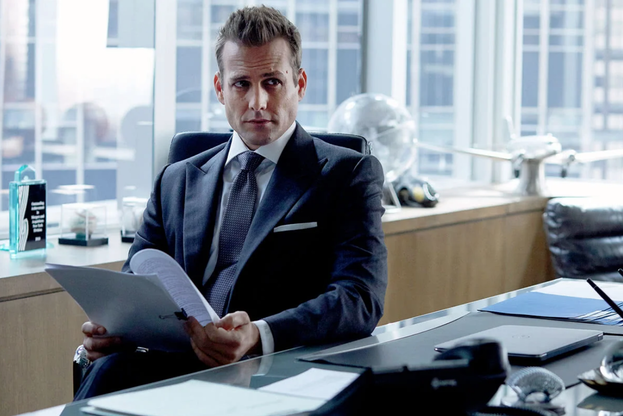
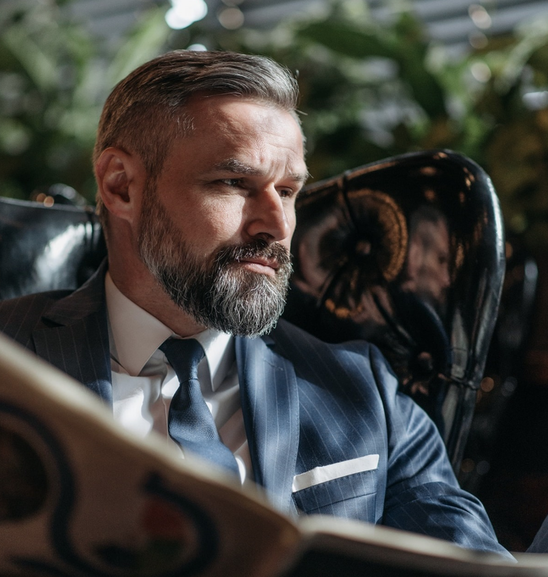
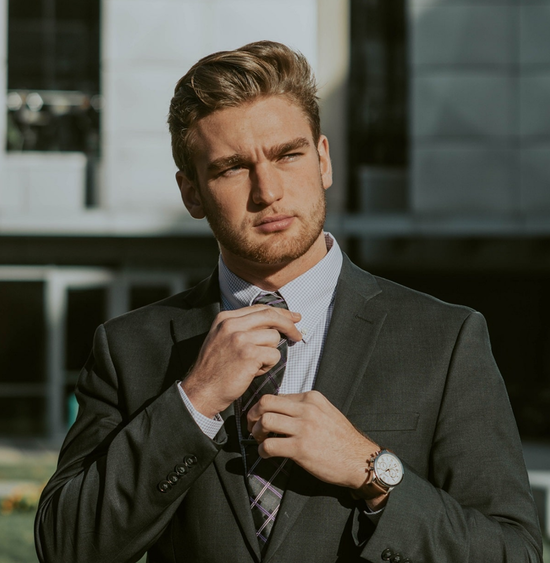
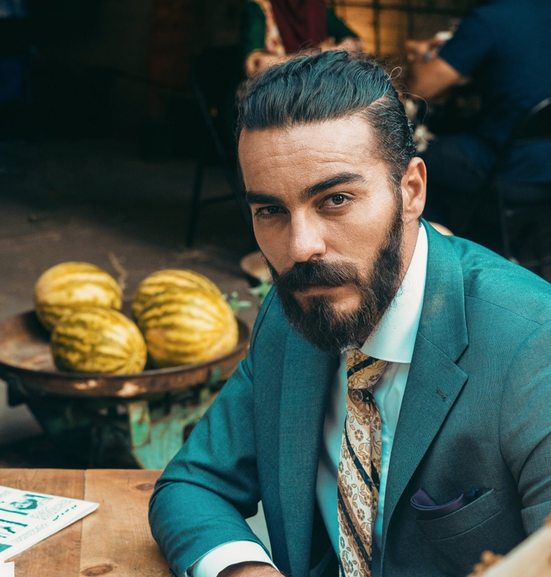
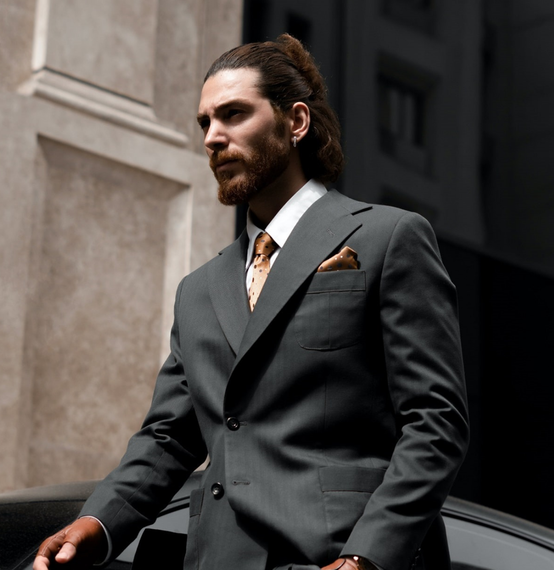
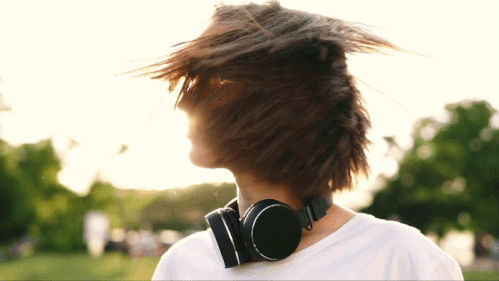

 RSS Feed
RSS Feed